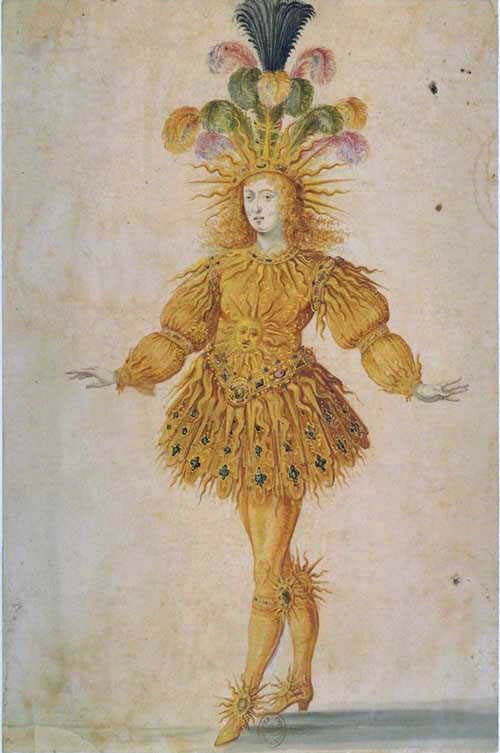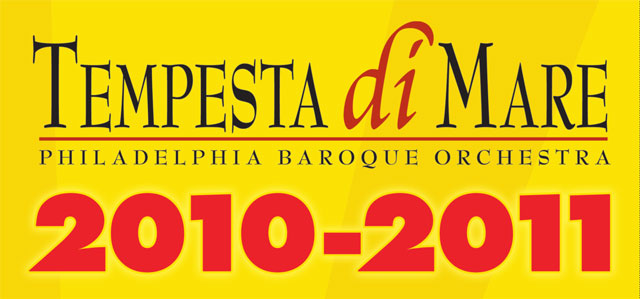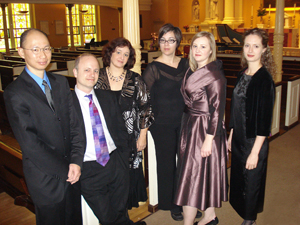Ninth Season
|
Newsletter February–March 2011 |
|
 FEATURE
FEATURE
The King’s Dance This story is a little about Bach and a lot about somebody completely different: King Louis XIV of France. The minuets, bourées and passepieds in Bach’s First Orchestral Suite in C relate directly to the Sun King. In fact, it’s fair to say that just about all the French dances suites in 18th-century baroque music—Bach’s suites, Fasch’s, Telemann’s, Handel’s Water Music and so many more—exist because of Louis, one of the most effective cultural emperors in history. He invaded Europe with dance and dance music. The Sun King loved to dance. He danced on stage for nearly two decades, he danced with his courtiers his entire life, he trained and practiced dance constantly. Music, much of it dance music, was in the background of all his daily routine. As someone who ruled by divine right, the Sun King was only justified in making his favorite hobby a state requirement. His nobles, the enormous and powerful French aristocracy, had to dance too, all the time, just like Louis. Strategically speaking, Louis used dance as a tool to keep potential rivals busy at court and under his control. But omnipresent dancing was also one of the things that gave his court the flamboyance and panache that made it the envy of the rest of Europe. Louis understood the value of cultural propaganda. When Louis’s fabulous Frenchness became all the rage in the late 17th-century, Louis-wannabes in courts all over Europe took French dance and dance music to their hearts and made it their own. French dance trickled down to bourgeois cities, too. In fact, French dance traveled to any hamlet that could afford a traveling dance master and an instruction manual (a Louis innovation: he encouraged a pioneering dance notation system that allowed French dance to be published and widely disseminated). The western world danced, and it danced French. (article continues below) |
|
|
Character of the Dances In Louis XIV’s court, popular dances played a variety of roles. Stage performances featured dance with lavish costumes, sets, and special effects and elaborate choreography. Stage dance eventually morphed into classical ballet. Formal dances—court balls held as often as once or twice a week in Paris and Versailles—were events of pomp, circumstance, and competition, as couples danced for review before the entire assembly. Social dancing took place along with conversation, card playing, and gambling in rooms and residences. Men and women danced together in pairs, but also alone and in same-gender pairs. Men executed the more elaborate choreography, whether by social mores or because female costume was impossible. And while French dance could—and did—include steps for highly skilled dancers involving advanced jumps, turns and foot-beats like pirouette, cabriole, and battemente, at its heart Louis’s French dance was for amateurs, albeit highly skilled amateurs. The gentleman nimbly dancing a bourée might be a general, partnered by a prince. The numbers after each entry indicate the placement of that dance movement in Bach’s Orchestral Suite No. 1 in C, Fasch’s Orchestral Suite in A Minor, and Rebel’s Les Charactères de la Danse. Bourée Courante Gavotte Gigue Loure Menuet Passepied Sarabande
|
|
|
FEATURE (continued) The era passed, but the music remained. By the time the Sun King died in 1715 at age 77, his salad days were already long behind him. His control had weakened, Versailles and Paris had opened up and French culture was turning to outside, non-French influences. By then, though, French dance music had become a permanent part of international Baroque repertoire. 
Bach, Fasch, Handel and Telemann, all in their early thirties when Louis died, continued to write French dances for decades following. Telemann eventually wrote more than one hundred orchestral suites, and while Bach wrote fewer in number for orchestra, he chose the form as a favorite for solo instrumental works. We’ve provided a Cook’s Tour of French movements in the sidebar above for the interest of audience members to Tempesta’s upcoming performance, Characters of the Dance: Bach’s First Orchestral Suite and the dances that inspired it. It’s good to keep in mind, though, that while French dances were virtuosic, they weren’t flashy. The steps were a means to the end of Frenchness, a sense of nobility, grandeur, elegance and ease that was the essence of French style. Baroque French dance steps acknowledge the fundamental act of governing an earthbound existence: shifting your body’s weight from foot to foot, moving to a beat and finding a counterbeat, defying gravity with a jump and embracing it with a bow, all the while keeping your head high and your spirit serene. When you danced French, you were your own divine ruler. Years later and miles away, when Bach and Fasch, Telemann and Handel wrote French, that’s what they were thinking of: kingliness. And there you have the character of French dance.
|
|
|
Web Redesign Tempesta di Mare has overhauled its web presence with a complete redesign of tempestadimare.org. Designed by Beth Blinebury, the new site features information on all our exciting concert events; photos, videos, and audio recordings; and a shop where you can purchase CDs and other merchandise. Take the opportunity today to browse our easy-to-navigate site and listen to some beautiful Baroque orchestral music. Visit tempestadimare.org. |
|
|
Fasch’s Hometown Tempesta’s March concert series, Characters of the Dance, will feature the modern world premiere of Johann Friedrich Fasch’s Orchestral Suite in A minor and another piece by Fasch, Sinfonia in G Minor. This April, Tempesta di Mare will travel with an orchestra of 18 musicians to Germany to perform these same works as part of the International Fasch Festival. Performances will take place on April 9 at the Cloister in Michaelstein/Harz and on April 10 in Fasch’s hometown of Zerbst. 
Zerbst is an historical town in former East Germany, only 28 miles north of Köthen, where Johann Sebastian Basch composed many of his most famous secular works, including the Brandenburg Concertos. As Fasch scholar Barbara Reul detailed in a pre-performance talk for Tempesta a few seasons ago, it was during Bach’s time in Köthen that he and Fasch, in an effort to satisfy the constant demands for new compositions from their royal patrons, engaged in what could have been the first music manuscript exchange. The composers exchanged scores and premiered each other’s work in their respective cities 
Both Zerbst and Köthen were hit heavily in the bombing raids during the final days of World War II; much of Zerbst’s old town was destroyed, including the ancestral castle of Russian Empress Catherine the Great (pictured as recreated model, above, and in ruins, left). Many of Fasch’s scores, which were archived in the Dresden library, were also destroyed by bombing, despite efforts to protect the collection by moving it to an underground vault. Tempesta is honored to perform these pieces, which were resurrected for modern audiences by our own artistic directors. We hope that you’ll follow our journey on Facebook, where we will be keeping a travel log, complete with photos, audio clips and tales of our adventures!
|
|
|
Roman Nights a Hit The Philadelphia press was effusive in its praise of our January concert series, Roman Nights. Here are some excerpts from their reviews. Go to the reviews page of our website to read more press reaction to this and other Tempesta concerts and CDs. “Early-music groups are in the business of attracting audiences to music they didn’t know they were missing. So the question at last weekend’s Tempesta di Mare concerts was what sort of keys can unlock the demure, even obscure artistic sensibility of Alessandro Scarlatti, a giant in 18th-century Rome but one whose output is like a vast lost continent. . . . Tempesta ultimately succeeded, both on Sunday and on its new Chandos-label disc, Alessandro Scarlatti: Cantatas and Chamber Music.” “Both the beauty and sophistication of the Roman musical scene during the early decades of the 18th century were efficaciously revived by Tempesta’s internationally acclaimed musicians. . . . The overall sound proffered by Tempesta’s six instrumentalists was ravishingly beautiful. The tone was delicately sweet and the texture was bracingly clear, allowing for eloquently turned phrases and elegantly suave voicings.” “Clara Rottsolk possesses a soprano voice with the coloring of a mezzo—an ideal choice for music that was probably composed for male altos. The cantatas she sang would have been performed in 18th-century drawing rooms and princely halls—settings that would be more relaxed and informal than modern concert halls. Rottsolk’s voice and expressive delivery successfully recreated that atmosphere for a modern ticket-buying audience seated in orderly rows.” Read more reviews of Tempesta concerts and CDs on our website. |
|
|
Stella Sera Dinner Thanks to all who attended our post-concert dinner at Stella Sera on January 30th. A great time was had by all. Conversations within this diverse group ranged from learning to play the viola da gamba to particle physics, womens rights, and world travel. Who knows? The evening may have included an impromptu serenade from a Telemann recorder sonata...but we'll never tell. Our post-concert dinners are a great opportunity to ask questions about Tempesta, specific instruments and baroque music in general. We hope that you will consider joining us in the future. Please stay tuned for dinner dates for next season. |
|
Tempesta di Mare • 1034 Carpenter St • Philadelphia PA 19147 • 215-755-8776 • www.tempestadimare.org

 FYI
FYI A quick, lilting dance with two beats to a measure, subdivided into three—the French cousin to the British jig. The dance often has hops and leaps on the downbeats of the music, with a preparatory sinking down (plié) on the pickups. Happy, infectiously danceable music that provides fun after a more serious movement or to provide a light-hearted finale to the suite. (Rebel movement #7)
A quick, lilting dance with two beats to a measure, subdivided into three—the French cousin to the British jig. The dance often has hops and leaps on the downbeats of the music, with a preparatory sinking down (plié) on the pickups. Happy, infectiously danceable music that provides fun after a more serious movement or to provide a light-hearted finale to the suite. (Rebel movement #7) WHAT’S NEW
WHAT’S NEW
.png) ROAD TRIP
ROAD TRIP REVIEWS
REVIEWS